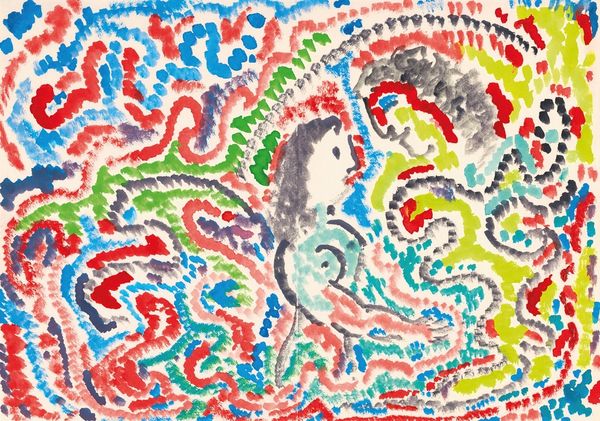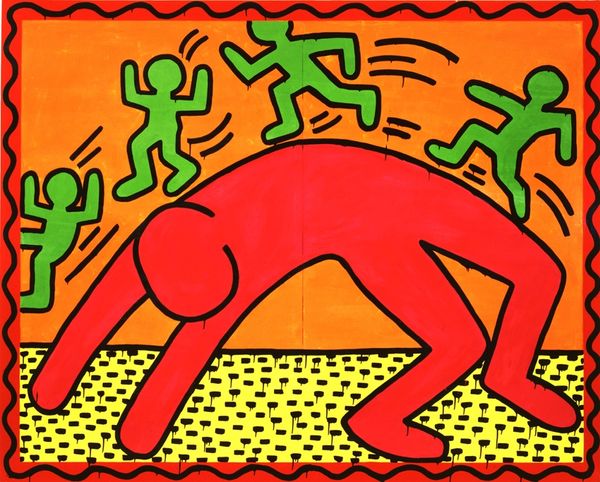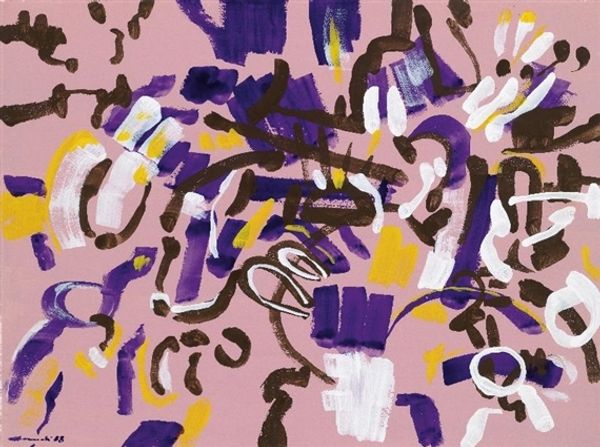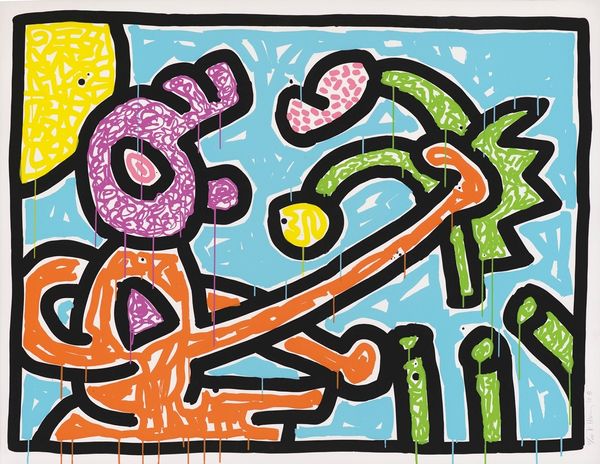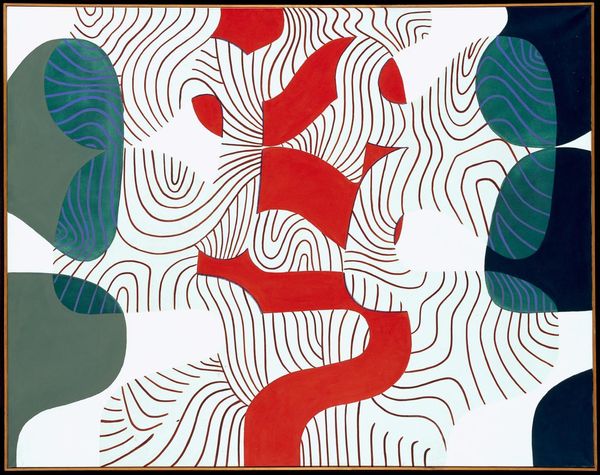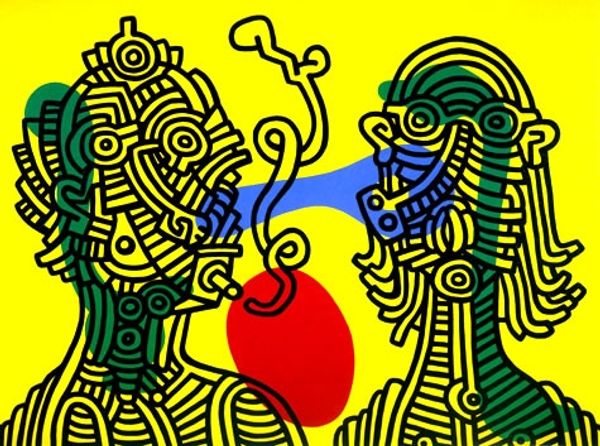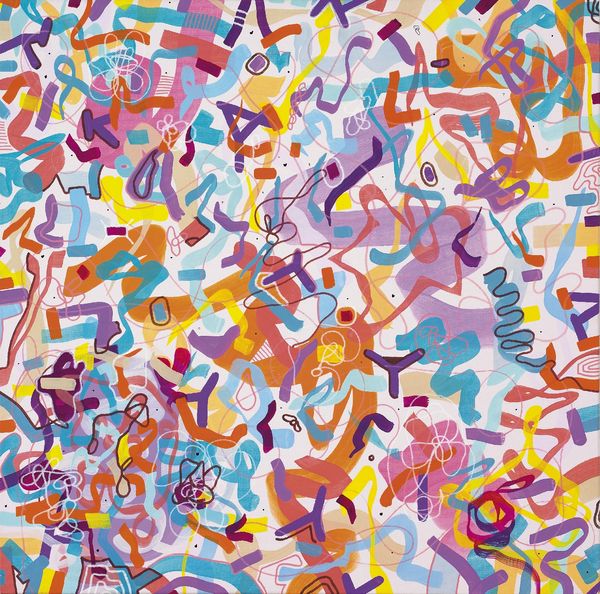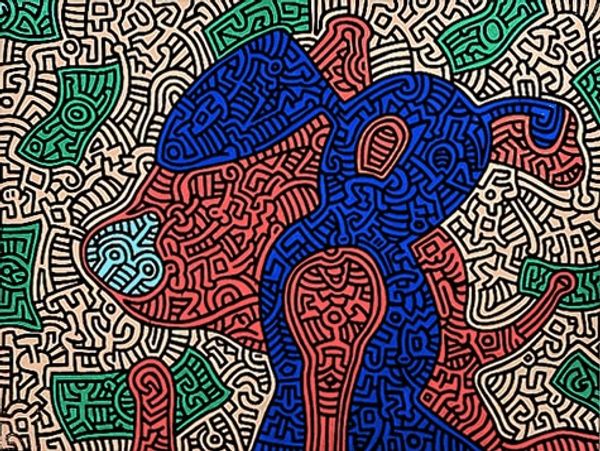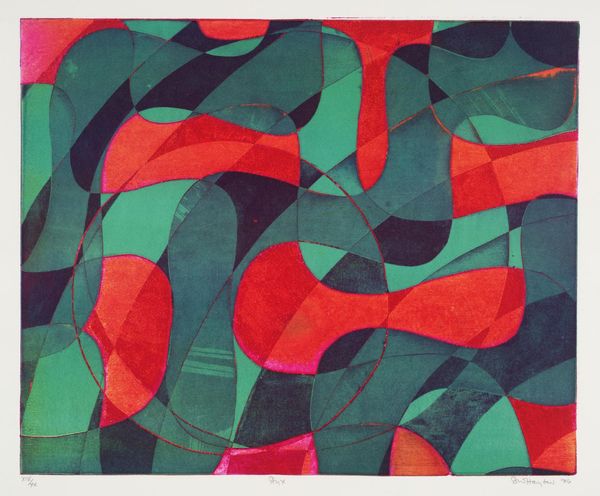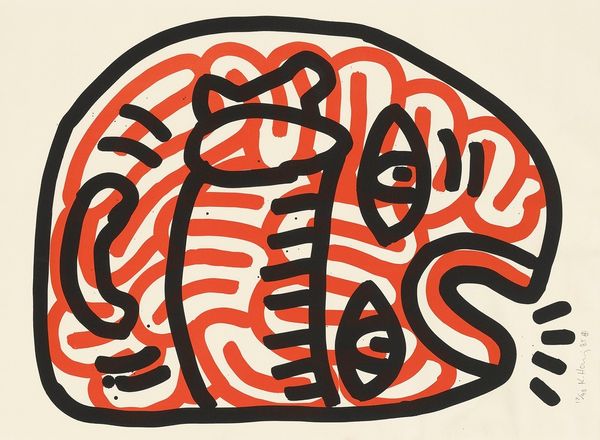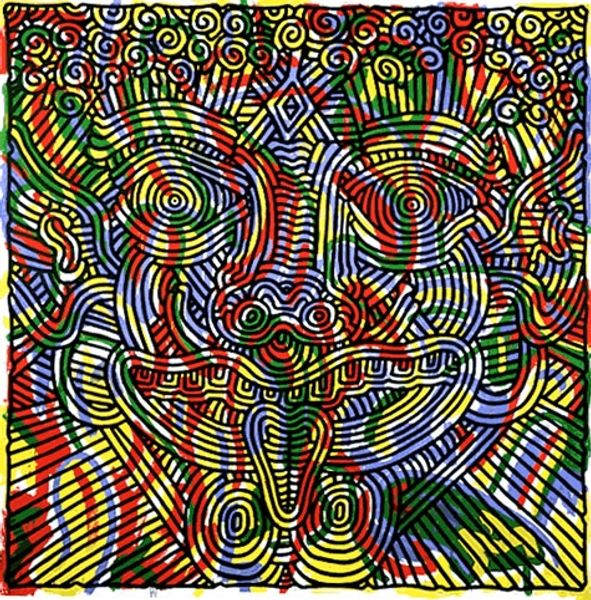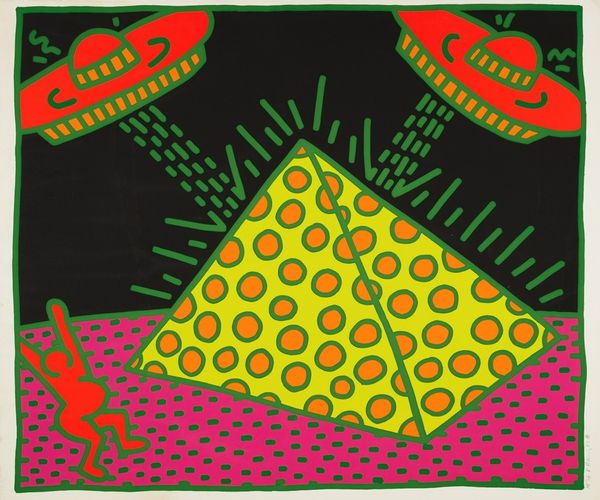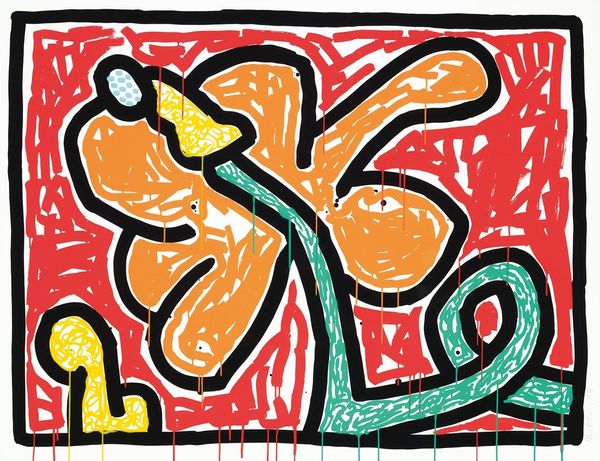
#
neo-pop
Copyright: Modern Artists: Artvee
The American pop artist Keith Haring (1958-1990) celebrates the joys of life in this painting. At a width of over 3.5 metres, Tree of Life (1985) is a striking and monumental representation of optimism and energy. It was sold for £1.53 million in 2014. Tree of Life acts as a homage to Haring’s close friend and fellow artist Maria Bonnier Dahlin (1964-1985), who died aged 20 in a car accident. Here, Haring opts to memorialise her memory with the spirit of joy, rather than produce a solemn piece in mourning of her passing. Dahlin’s legacy is also preserved in the Maria Bonnier Dahlin Foundation, which provides financial grants to young Swedish artists. The motif of a sacred tree is one which spans religion, mythology, location, and time. The tree of life is a virtually universally recognised symbol of eternal life and the power of nature, featuring in Islam and Greek mythology to Christianity and beyond. Alongside works such as St. Sebastian (1984) and The Ten Commandments (1985), Tree of Life (1985) is one of many biblical subjects painted with originality and imagination by Haring. He infuses a vibrant and fantastical dynamism into the traditional symbol of a tree of life, infusing the painting with a fresh and contemporary energy. Blooming from the twisted branches of the tree are not flowers, but dancing bodies with waving arms. Below the tree, yellow polka dot figures are also caught in a whirl of energetic movement, and raise their hands as if worshipping the tree. The black lines, representing lively movement, and vibrant colours of the piece create a sense of optimism and triumph. Inspired by 1980s New York graffiti subculture, Haring’s works are widely reproduced, both as prints and on popular merchandise. His paintings are often instantly recognisable due to their signature dancing outlines, bold colours, and graphic texts. This painting comes from the later stage of his career, when Haring used his work to call attention to social and political themes such as the AIDS crisis and apartheid. The artist died at 31 from AIDS related complications, leaving a brilliant legacy of iconic and publicly accessible images. Editor: Lucy Jude Grantham
Comments
No comments
Be the first to comment and join the conversation on the ultimate creative platform.
